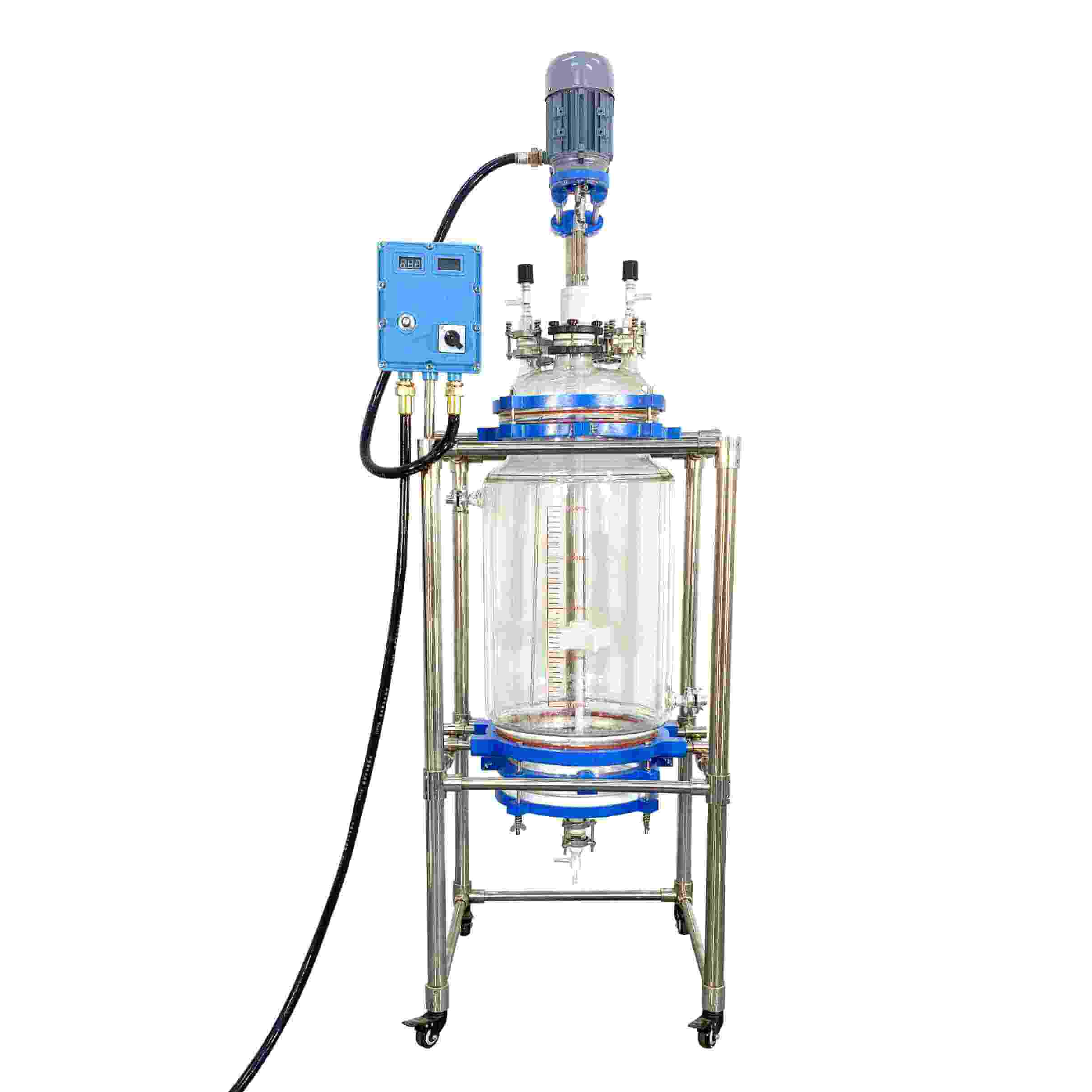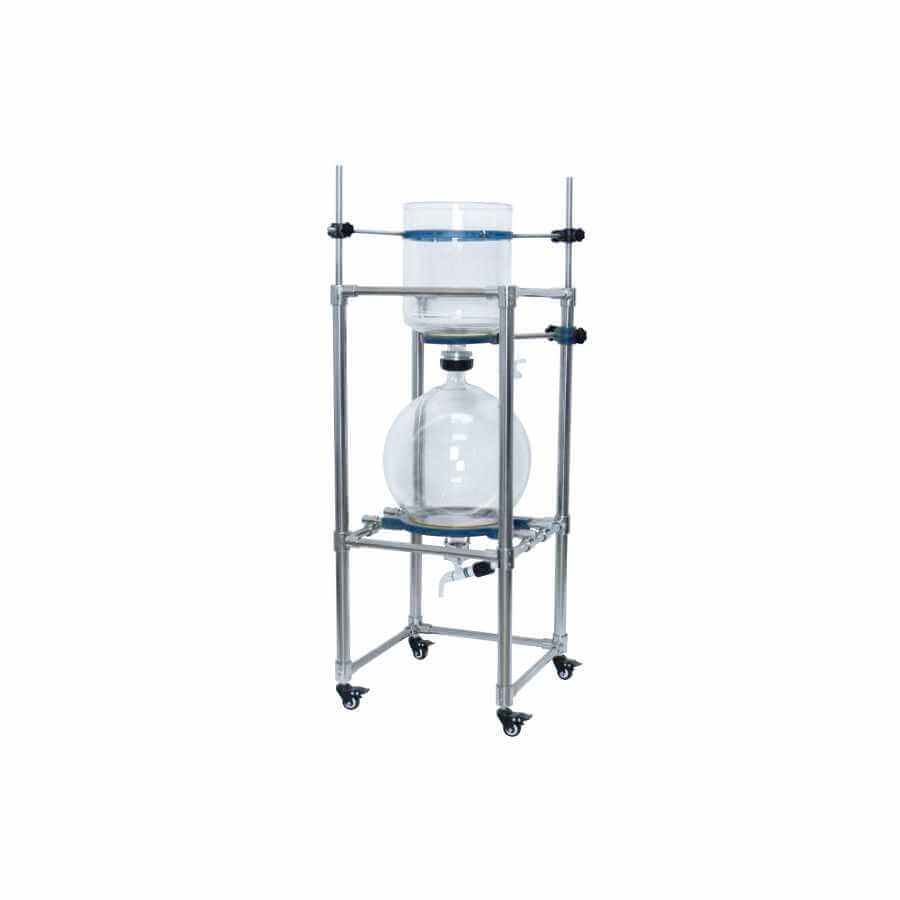

Glass Reactor
Glass reactors: used in chemical reactions, drug research and development, fine chemicals, food manufacturing, and other fields.
Material
glass
Capacity (L)
10-10000+
Mixing system
anchor, paddle, frame and others
Heating system
electric heating, oil heating and others
RUNGYU glass reactors are commonly used biochemical instruments and are widely used in modern fine chemicals, biopharmaceuticals, scientific research and experiments, and other industries. They can be used for concentration, distillation, reflux, separation, and purification reactions under the conditions of constant speed, constant force, and constant temperature. It is an ideal equipment for teaching, experiment, pilot test, and production.
Request a quoteJacketed glass reactors are vessels that control the temperature of the compound. They can be used to achieve heating or cooling effects around the desired jacketed glass reactor. Some glass reactors are jacketed, so people call them jacketed glass reactors. Having jackets brings many advantages, for example: they allow for heat transfer or exchange. Typically, heat is exchanged through reactants or fluids bound in the vessel walls.

Features of jacketed glass reactor
The jacketed glass reactor has the characteristics of convenient use and excellent performance when used. The main component of the glass material is high-quality borosilicate, which does not react with the solution in it and is heat-resistant. At the same time, during the stirring process of frequency conversion speed regulation, it will be relatively stable, and no sparks will be generated even if the torque is large. The compound was stirred continuously during the heating process. This improves the uniformity of the compound, avoids localized heating along the walls of the jacketed glass reactor, and ensures uniform heat throughout the compound.
Jackets are available in single-jacket and double-jacket configurations. Single-jacketed systems use a condenser to circulate liquid around a jacketed glass reactor, while double-jacketed systems use a condenser to circulate liquid through an inner jacket. The outer jacket serves as vacuum insulation, ensuring that the vessel remains at the desired temperature and preventing condensation from forming at ultra-low temperatures.
A jacketed glass reactor is a vessel that regulates the temperature of its internal compounds by heating or cooling the jacket. The jacket enables uniform heat exchange between the fluid circulating therein and the vessel walls.
Single/double-layer jacketed glass reactors are designed for synthesis reactions of different types of materials under controlled temperature and vacuum environments. Each jacketed glass reactor features adjustable stirring speed and a constant pressure feed funnel, allowing it to add materials to the vessel at a uniform and controlled rate. A built-in condenser can recover some material at a controlled rate.
Working principle of jacketed glass reactor
1. The jacketed glass reactor mainly utilizes the characteristics of double-layer glass to inject constant temperature (high or low temperature) hot melt medium or cooling medium through the jacket of the jacketed glass reactor. The materials in the jacketed glass reactor are heated or cooled at a certain temperature to make them constant temperature and stirrable. Ensure that the material or liquid is heated to a constant level through the stirrer, and the stirring reaction is carried out in a closed jacketed glass reactor under normal pressure or negative pressure.
2. The materials react in a jacketed glass reactor, and the evaporation and reflux of the reaction liquid can be controlled. It is an ideal equipment for modern chemical samples, medium sample experiments, biopharmaceuticals, and new material synthesis.
3. It can provide high-temperature reactions (equipped with a corresponding circulating oil bath, the highest temperature can reach 200 ℃); it can also be used for low-temperature reactions (equipped with a corresponding low-temperature refrigerant circulation system, the lowest temperature can reach -60 ℃), can be vacuumed, Thus, a vacuum reaction is carried out. And its unique design makes testing safer and more convenient.
4. At the end of the reaction, the material is discharged through the given discharge valve at the bottom of the jacketed glass reactor.
Jacketed glass reactors can be used for many compounding reactions, before using them in any reaction, make sure the power system meets the desired specifications. The speed of the system is also adjustable and must be tuned according to the speed required and the type of chemical reaction one wants to achieve. The seal is critical here and it is imperative to make sure it is the best it can be. Do not choose materials that degrade, and the swivel bearings must also be checked. If all high-quality materials are used, it will be safe to use.




